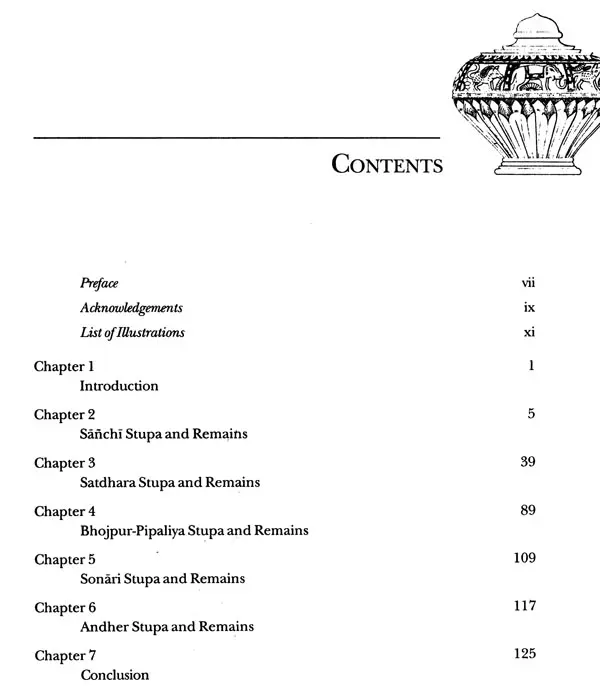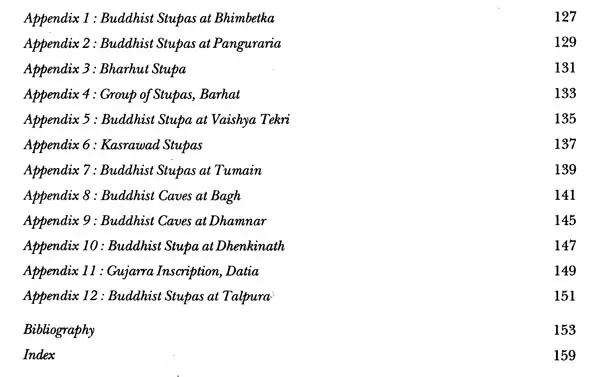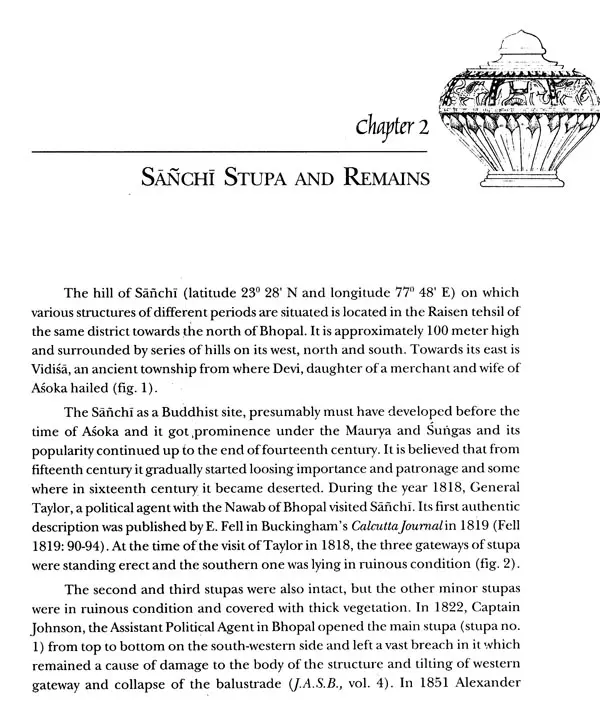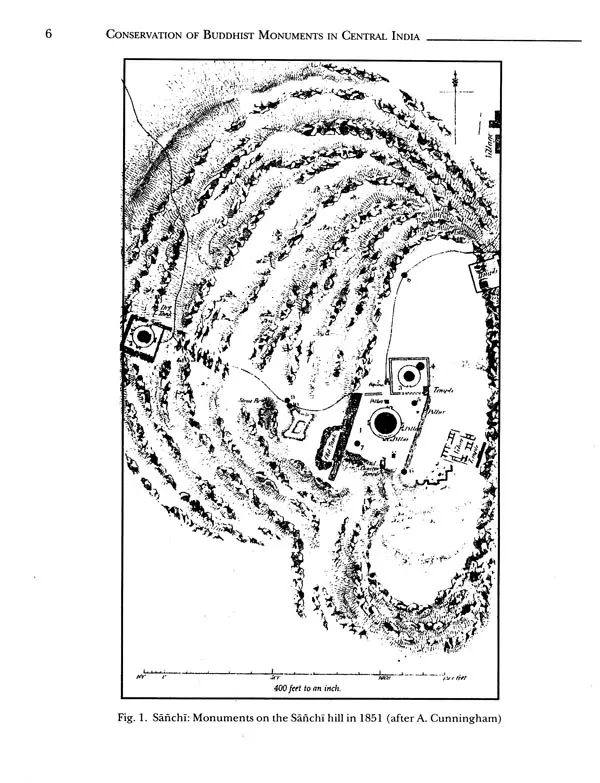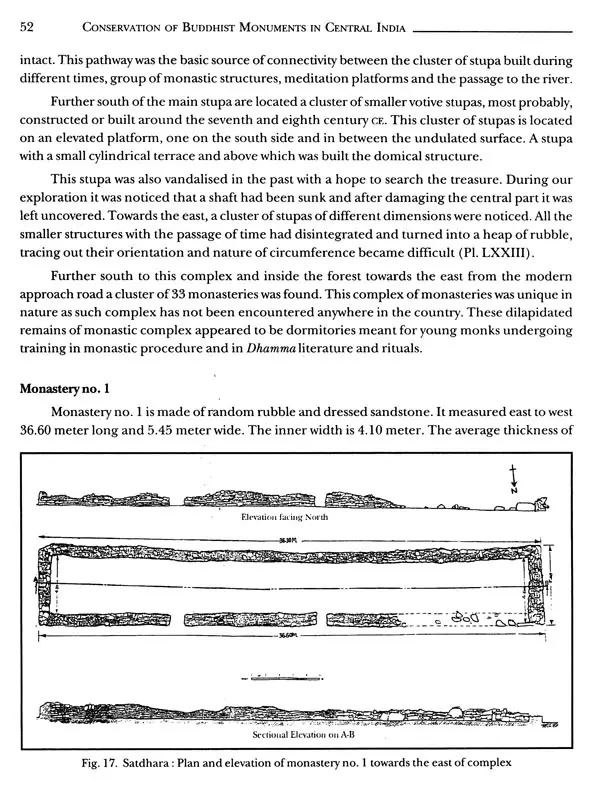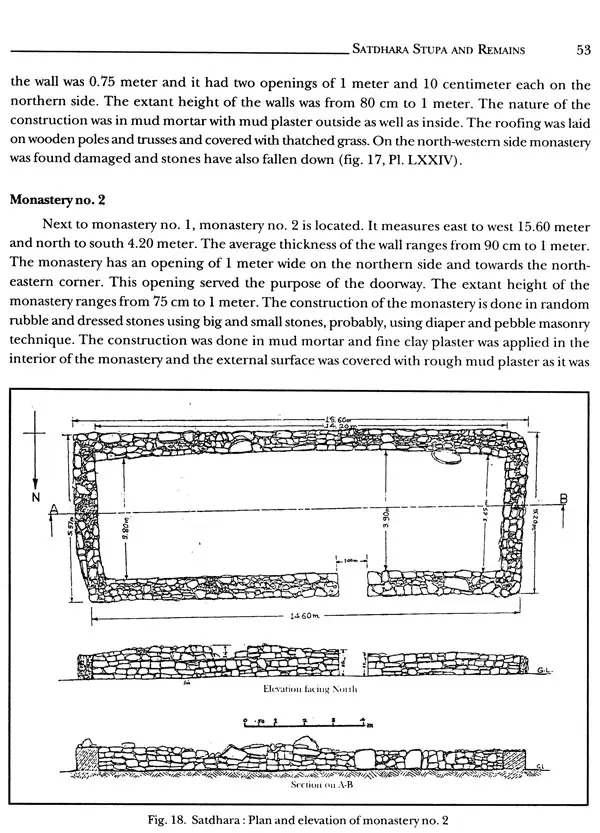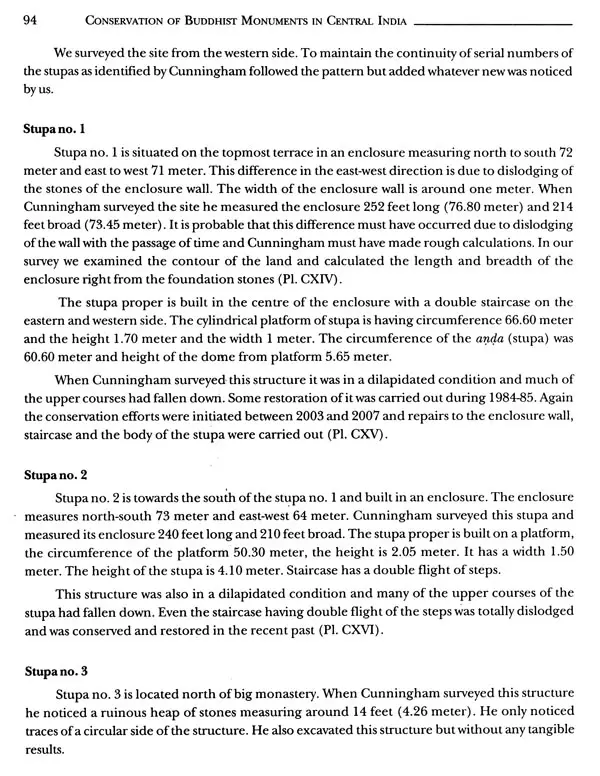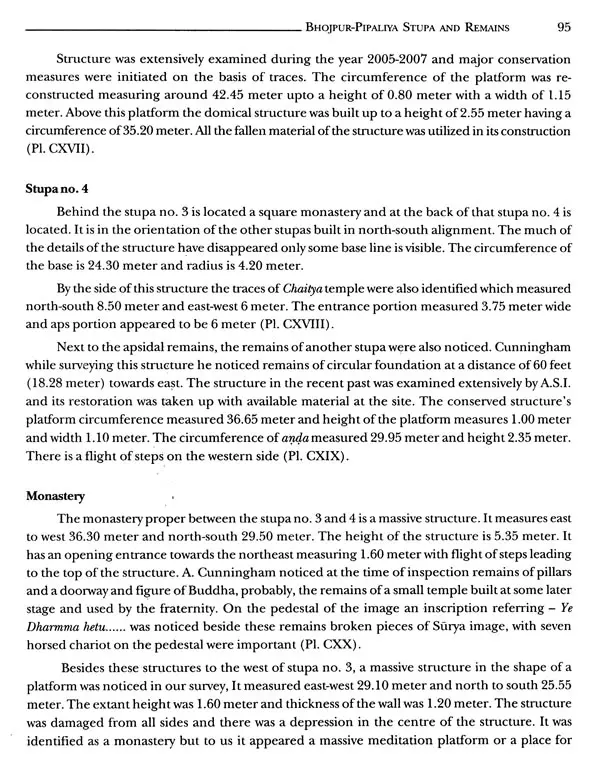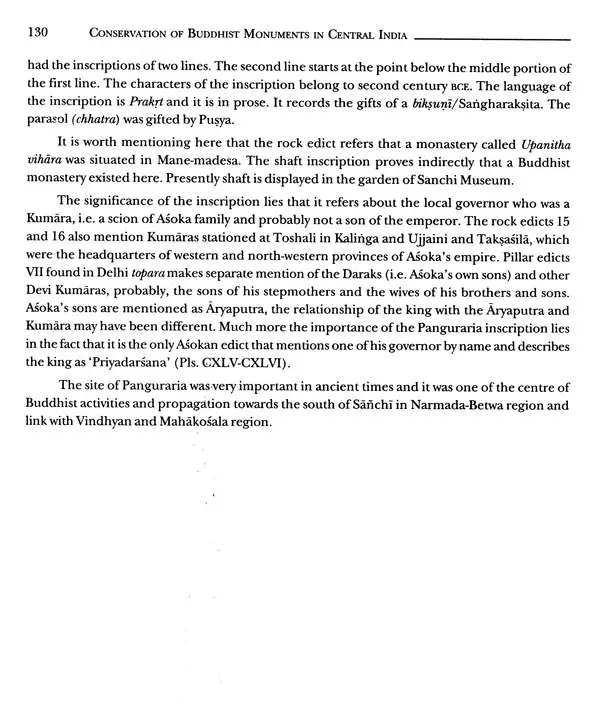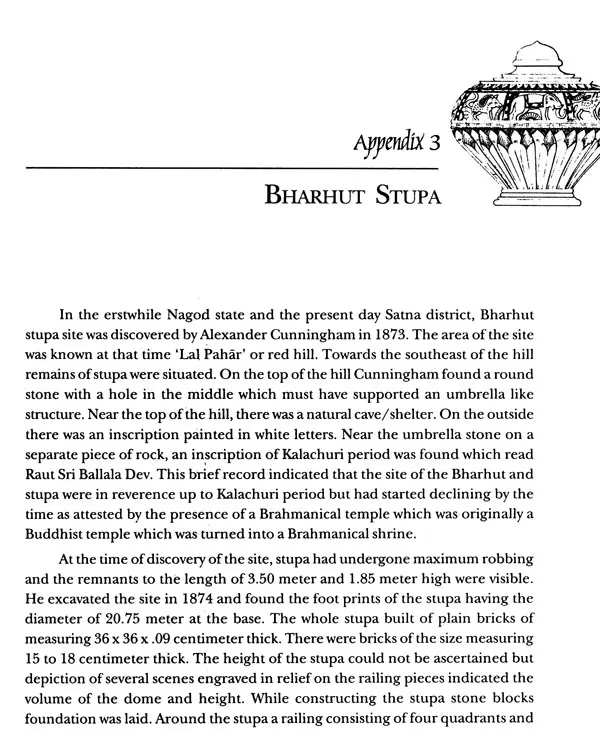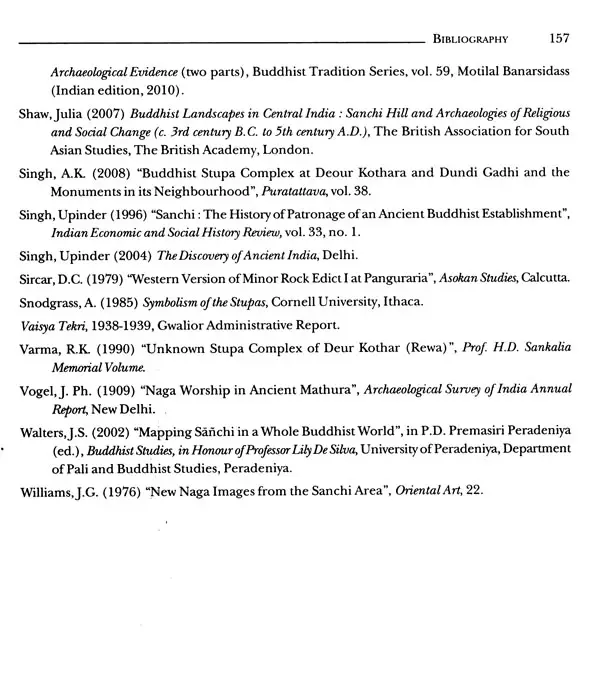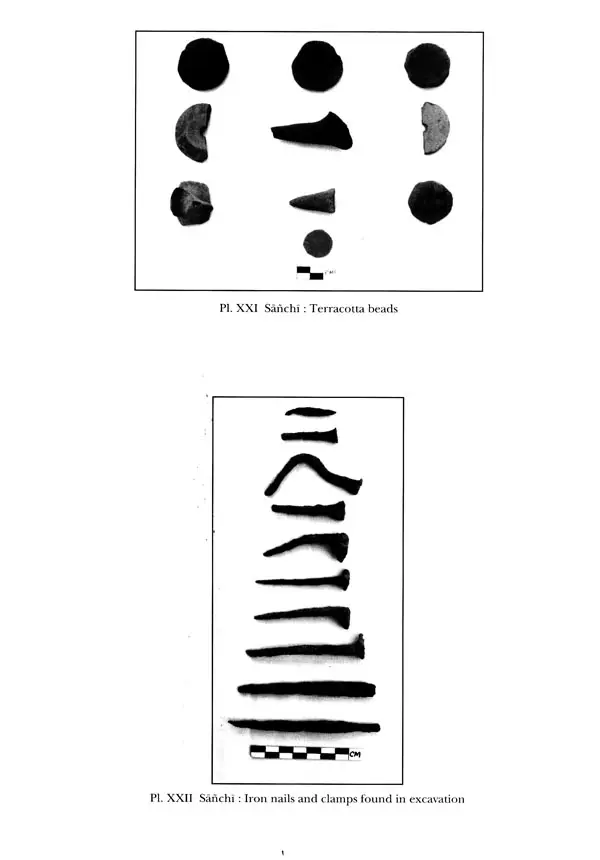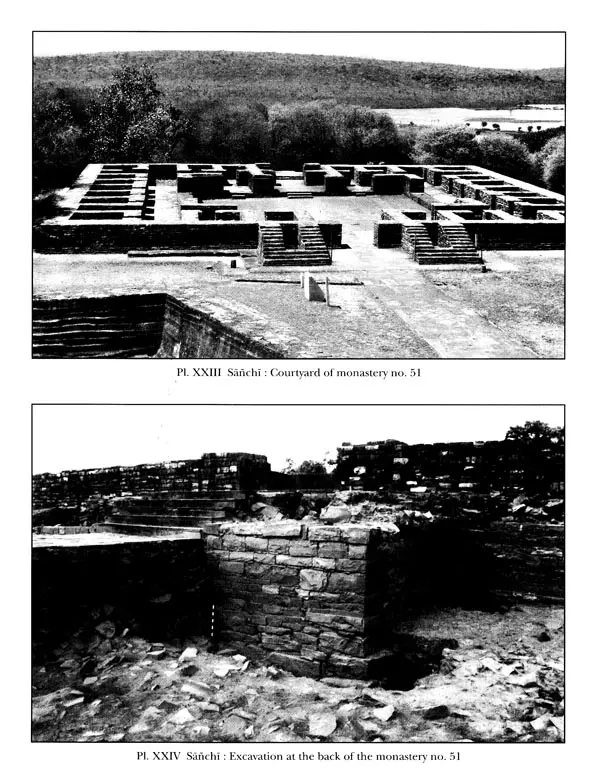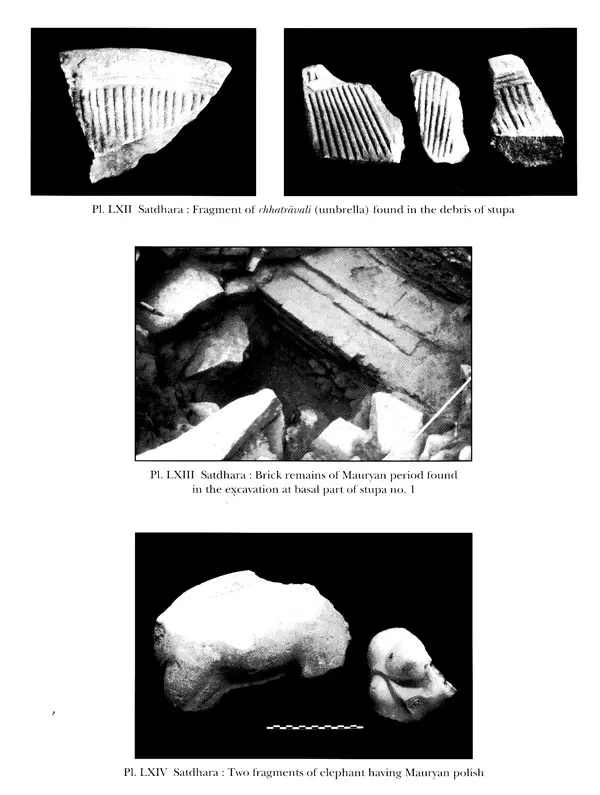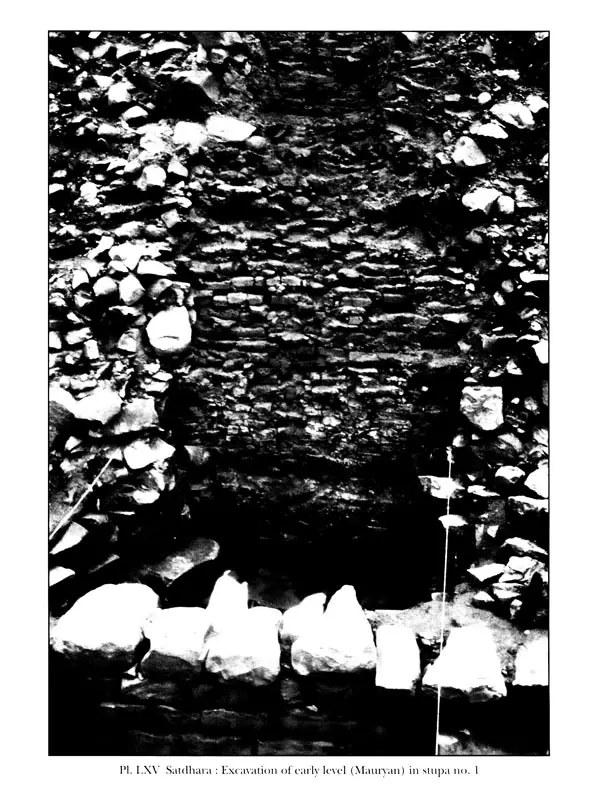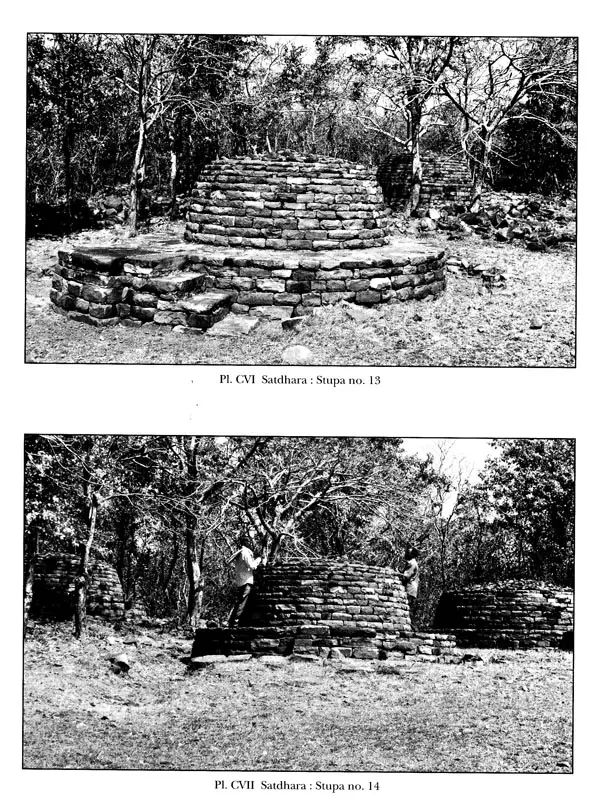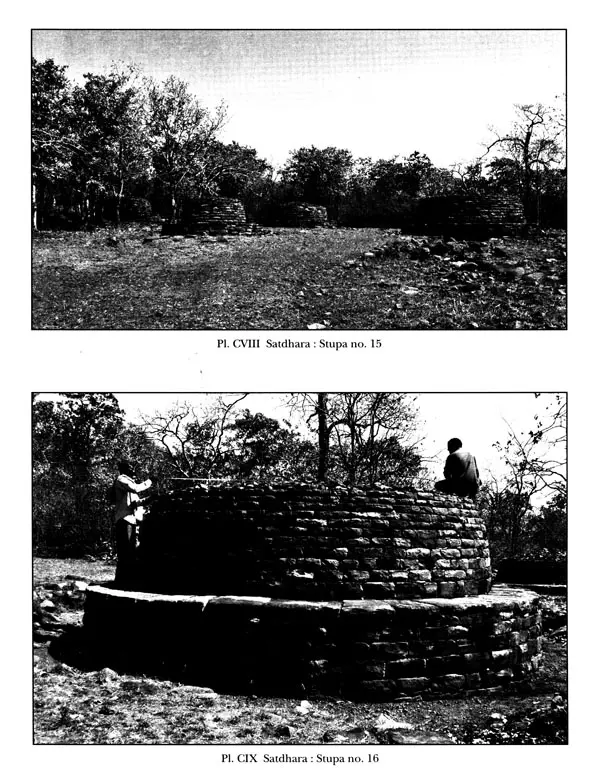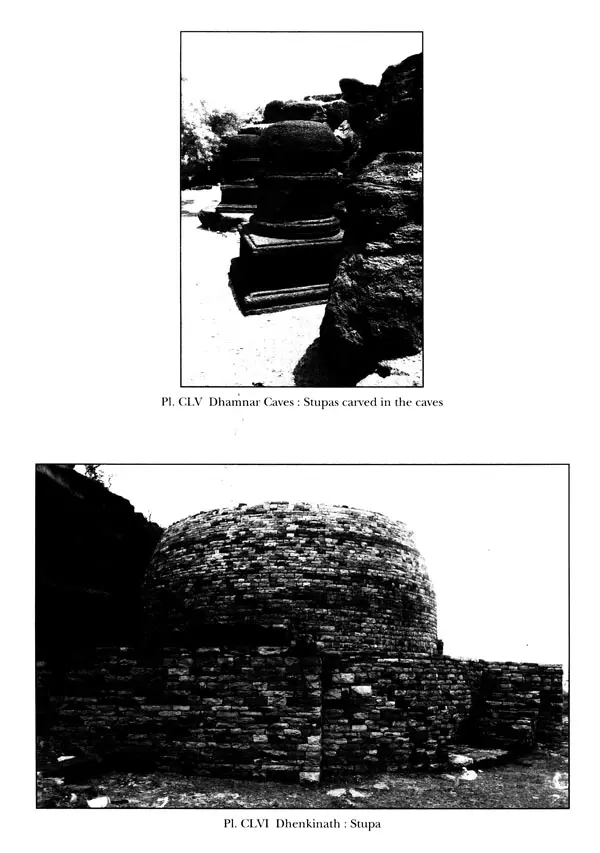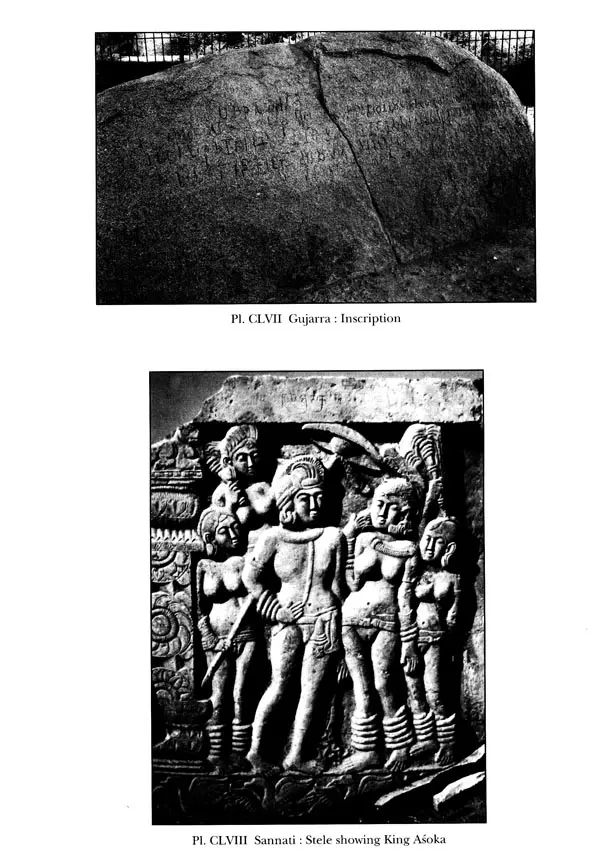
Conservation of Buddhist Monuments in Central India
Book Specification
| Item Code: | UAE555 |
| Author: | R.C. Agrawal |
| Publisher: | Sharada Publishing House, Delhi |
| Language: | English |
| Edition: | 2015 |
| ISBN: | 9789383221059 |
| Pages: | 262 (Throughout B/w Illustrations) |
| Cover: | HARDCOVER |
| Other Details | 11.00 X 9.00 inch |
| Weight | 1.24 kg |
Book Description
From 1818-1851 no substantial investigations were carried out. In 1852, unsystematic excavations were carried out by Alexander Cunningham at Sanchi and other sites (Sonari, Satdhara, Bhojpuri- Pipaliya and Andher), but no initiative was taken for the preservation till 1912. Between this periods of half a century, more damage was caused to the Sanchi in the name of restoration and other sites suffered. John Marshall initiated conservation at the request of Bhopal state and the results of these operations were published in 1940.
The fate of other sites in terms of survey, excavation and conservation remained neglected. In 1991 efforts were made to survey these Buddhist sites again along with Sanchi, which thrived more than fifteen hundred years. The survey of Satdhara and Bhojpuri-Pipaliya revealed many facets of these establishments which had remained in oblivion for one and a half century. The present study deals with the survey, excavation and conservation. Much more work needed to be done around these sites. Hope future archaeologists will take it forward what has been done in the last fifteen years.
He has been closely associated with many academic bodies and has published research papers on art, archaeology, paintings and rock art. He is widely travelled and member of ICOM, ICOMOS and other academic bodies.
In his career he has served as Director (Monuments), Joint Director-General, Institute of Archaeology, Member Secretary, Indian Council of Historical Research, Pro-Vice Chancellor, National Museum Institute and Professor of Museology, Principal Director, Architecture Heritage Division, INTACH.
Presently, he is a visiting faculty to Architectural Conservation Department (SPA), Institute of Archaeology, Archaeological Survey of India, National Museum Institute and President of Rock Art Society of India.
In 1992, the then Joint Secretary of Department of Culture, Shipmate Comal Anand visited Sanchi and during the course of inspection of the site expressed that A.S.I. should take up an integrated programmed of the preservation of Sanchi and other Buddhist sites located in close proximity and seek funding from UNESCO. She also advised that a proposal for this be formulated for taking up the same with UNESCO. This prompted an in depth examination and evaluation of Buddhist sites situated within a ten kilometers of radius of Sanchi stupa. Sites like Satdhara, Sonari, Andher and Bhojpuri-Pipaliya located within a radius of ten kilometers were examined and studied and a comprehensive proposal was conceptualized and forwarded to her through D.G., A.S.I. for seeking the financial support for undertaking the documentation, excavation, conservation, environmental development and creating basic visitor friendly amenities to make the site as a model and preserving the same for the future generations.
In the month of December 1992, a delegation from Japan headed by Madam Chi Nakane and the officials of the Ministry of Foreign Affairs, Government of Japan visited Sanchi, Satdhara and made on spot assessment of conservation need. This delegation was followed by another technical delegation consisting of UNESCO programmed specialist Mr. Christian Manhart, Professor Takashi Doe, School of Human Culture, the University of Shiga Prefecture, Professor Nishikawa and curator of State Museum, Japan, Mr. Doe. The technical team visited Sanchi, Satdhara, Sonari, Andher and Bhojpuri-Pipaliya and had extensive discussion with the officials of Archaeological Survey of India for the preservation of Sanchi and Satdhara. The technical team's recommendations were accepted and UNESCO roped Japan Funds-in-trust and trust provided financial resources for the excavation and conservation of the sites of Sanchi and Satdhara. The operations were begun in right earnest in the middle of 1993.
Siddhartha moved place to place and came in contact with various seers and Acharyas to learn the means of realization of truth. After moving several years he decided to undertake meditation and sat under a tree near a place known in history as Revile, near present Bodhgaya, district Gaya (Bihar) on the bank of Niranjana river. He meditated here for six years and finally attained enlightenment. He discovered the truth, he was after. After the attainment of the enlightenment he contemplated for five weeks and ultimately realized that what he has got is for the welfare of the people and he decided to preach to the common men.
He delivered his first gospel to his five old known companions and this sermon has been termed in Buddhist literature as Dharma chakra pravartana (setting the wheel of law in motion).
Buddha expounded that there is a dukham (suffering), samudaya (the cause of suffering), nirodha (removal of the cause) and the marga (the way of leading to the removal of the cause).
He explained that there are many causes of suffering, such as the company of the unpleasant, separation from the dear ones, not getting what one desires, etc. The cure lies in the removal 01 the cause and he advised that there are ways; (1) Samyak drsti (right view), (2) Samyak sankal; (right thoughts), (3) Samyak vak (right speech), (4) Samyak karma (right action), (5) Samyak vyayama (right exertion), (6) Samyak ajiva (right livelihood), (7) Samyak smrti (right mindfulness) and (8) Samyak Samadhi (right meditation). These sayings of the Gautama were considered in Buddhist literature as middle path of salvation and became a principle factor of behavior amongst the followers of Buddha and also those who believed in his preaching’s.
Siddhartha preached the common men, priestly persons, members of the royal families the good ways of life for more than forty years and had a very large following in the present daj geographical area of state of Bihar, Uttar Pradesh,jharkhand, part of Orissa and certain adjoining areas of these states including the region of Nepal. He attained MahiiParinirvii1Jaat the age of 79 He was cremated with a 'great honor at Kushinagar and his mortal remains were distributed amongst the royal families and on these corporeal remains thupas (stupas) were built for the veneration of the great master.
At the time of cremation and even after there was a difference of opinion amongst several' followers of Siddhartha. There were several discussions on the sayings of Sakyamuni but none argued on the meaning and application. During his life time his sayings were considered the ways of improving the quality of life and developing fraternity, faith and love for each other. AI' his sayings were memorized and none thought of codifying them. The great disciples Amanda Sariputra and Mahamogalayan were the great strength for what Sakyamuni has said and gradually assumed the shape of a directive principles of good life.
Book's Contents and Sample Pages
